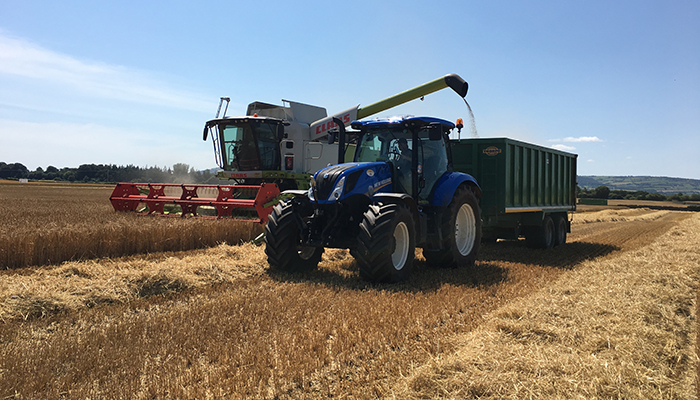27 July 2023
Harvest Progress July 2023

The stop/start nature of the harvest is causing many issues on farms, growers can’t seem to get a number of days dry together to get on top of work while variable yields, quality problems and lodging are just three of the issues growers are dealing with at the moment. Shay Phelan tells us more.
Some winter barley straw still on the ground weeks after it has been cut, this is proving very difficult to get baled at this stage unless it is stirred. Where a rake is being used, avoid running the pto speed too fast as this will increase the risk of breaking up the straw even further and consequently losses will be higher. Remember all you need to do is to move the straw from where it is lying and expose the straw at the bottom to the light and wind so it will dry out. Avoid gathering bales and lining them up for loading where ground conditions are soft, as this will result in compaction. Keep all tractors and trailers on tramlines and limit turning with full loads in the field where possible.
Winter oats and winter oilseed rape are being cut this week with some reports that yields are a little lower than average in some cases. What is of significant benefit when harvesting these crops is the fact the most growers are chopping the straw, this has helped growers to get the land cleared. In a year where the weather is broken during harvest, the Straw Incorporation Measure (SIM), has proven invaluable, not just for the aid that is paid, but it also significantly reduces workload, and speeds up the harvest.
Early sown spring barley crops are starting to be harvested this week but it is too early to say how the crop is performing. On many farms, these may well be the best barley crops, as the later sown crops seem to have many issues from lodging to secondary growth.
Cover crops
With some land now having been cleared of straw, farmers are starting to turn to drill catch crops when the combines are stopped. If you are drilling them as part of the Agri-Climate Rural Environment Scheme (ACRES) then you will need to be conscious of the scheme rules especially if you intend to graze them. These include
- Crops must be sown by September 15.
- Ploughing is not allowed
- At least two species must be selected from the list above.
- Under sowing with grass or cereal is not allowed
- Catch crop must remain in situ until at least January 1st.
- Incorporation or light grazing allowed after January 1st
- Zero grazing or intensive strip grazing are not allowed.
All catch crops sown whether in ACRES or not must comply with the new GAEC 6 rules under conditionality rule in the Basic Income Support Scheme (BISS). These guidelines state that a 3 metre buffer must be left around all non-watercourse boundaries while a minimum of 4 metres must be left near a watercourse. These crops cannot be sprayed off before December 1st and where the crops are to be grazed a lie back area of equal size to the catch crop are must be available at all times to the animals.
Tillage Edge Podcast
Don’t forget to tune into this week’s tillage edge podcast where Michael Hennessy talks to Louise McNamara and Stephen Byrne, researchers in Oak Park, to discuss the extensive research which will underpin BYDV advice in the future.
